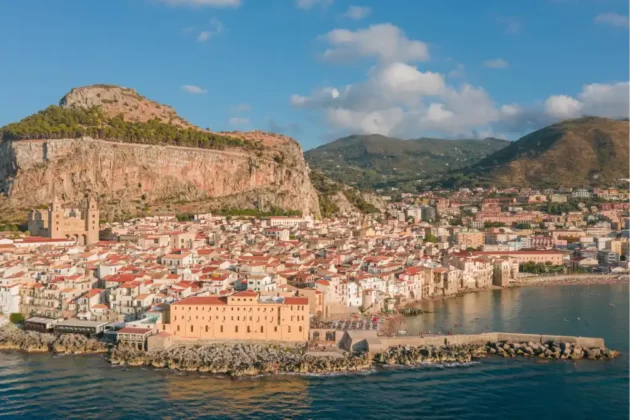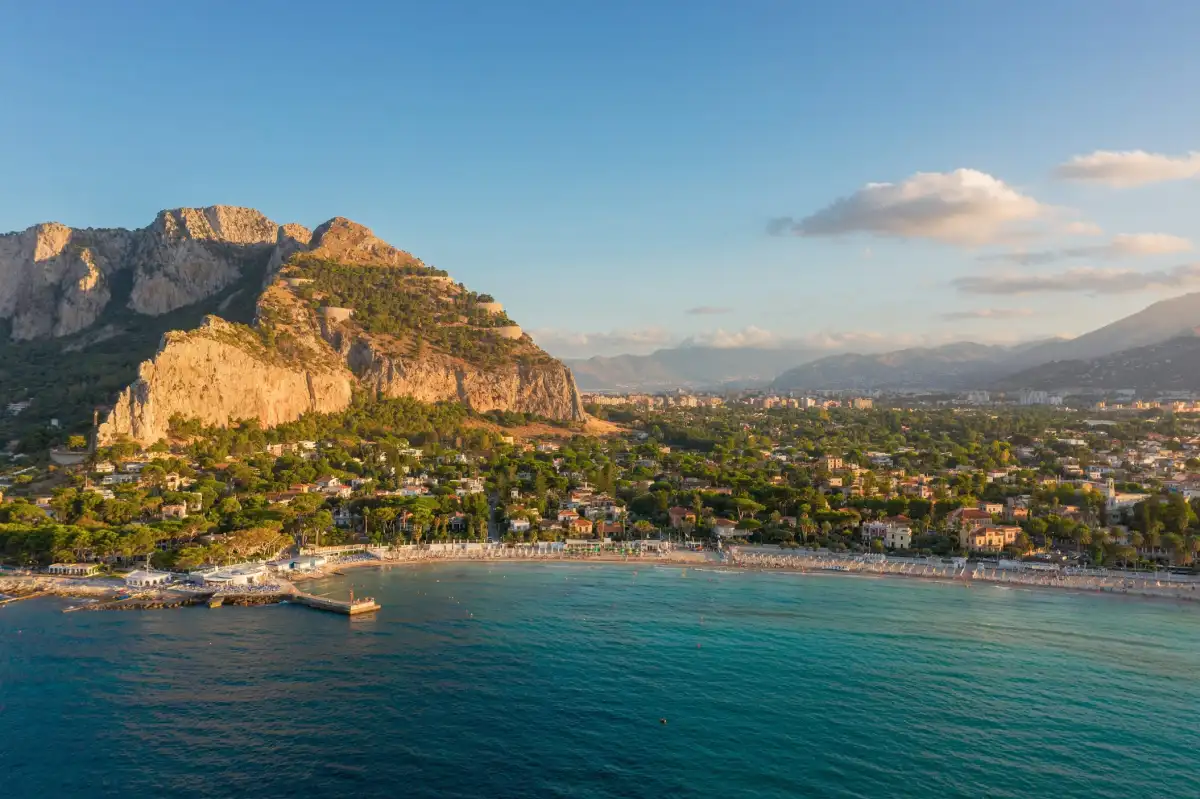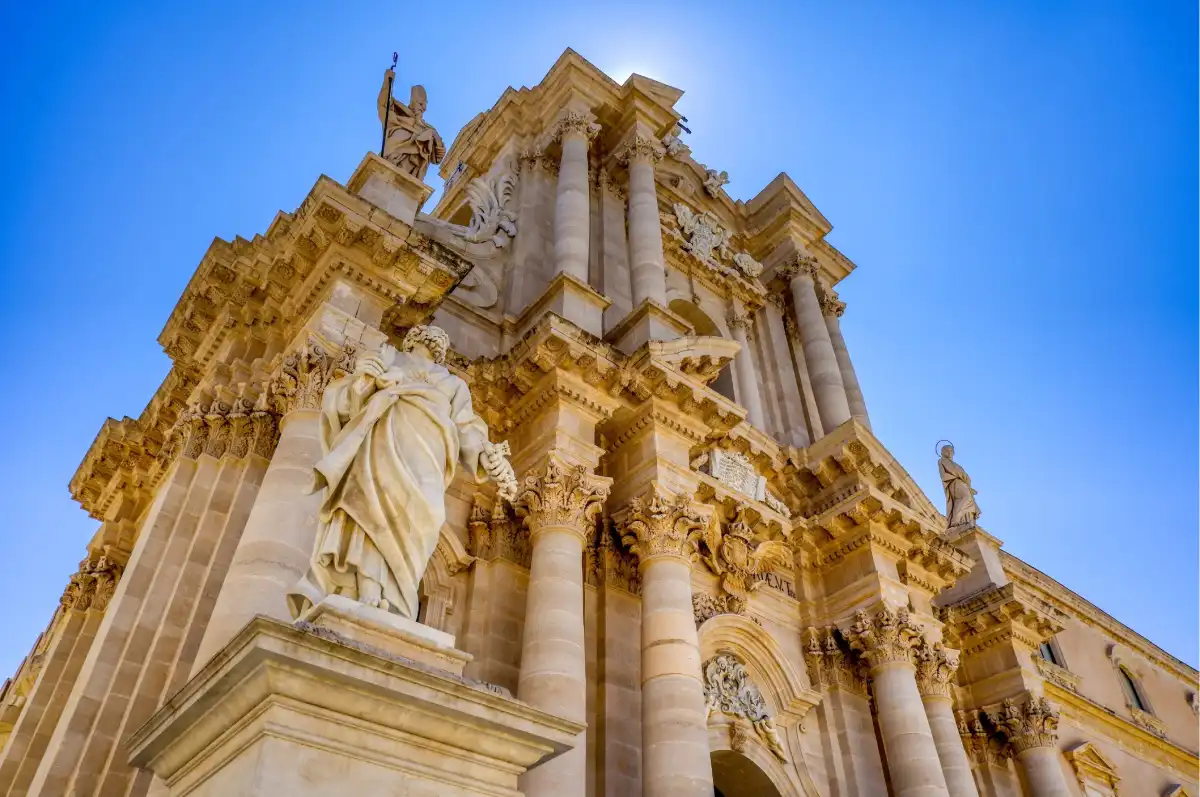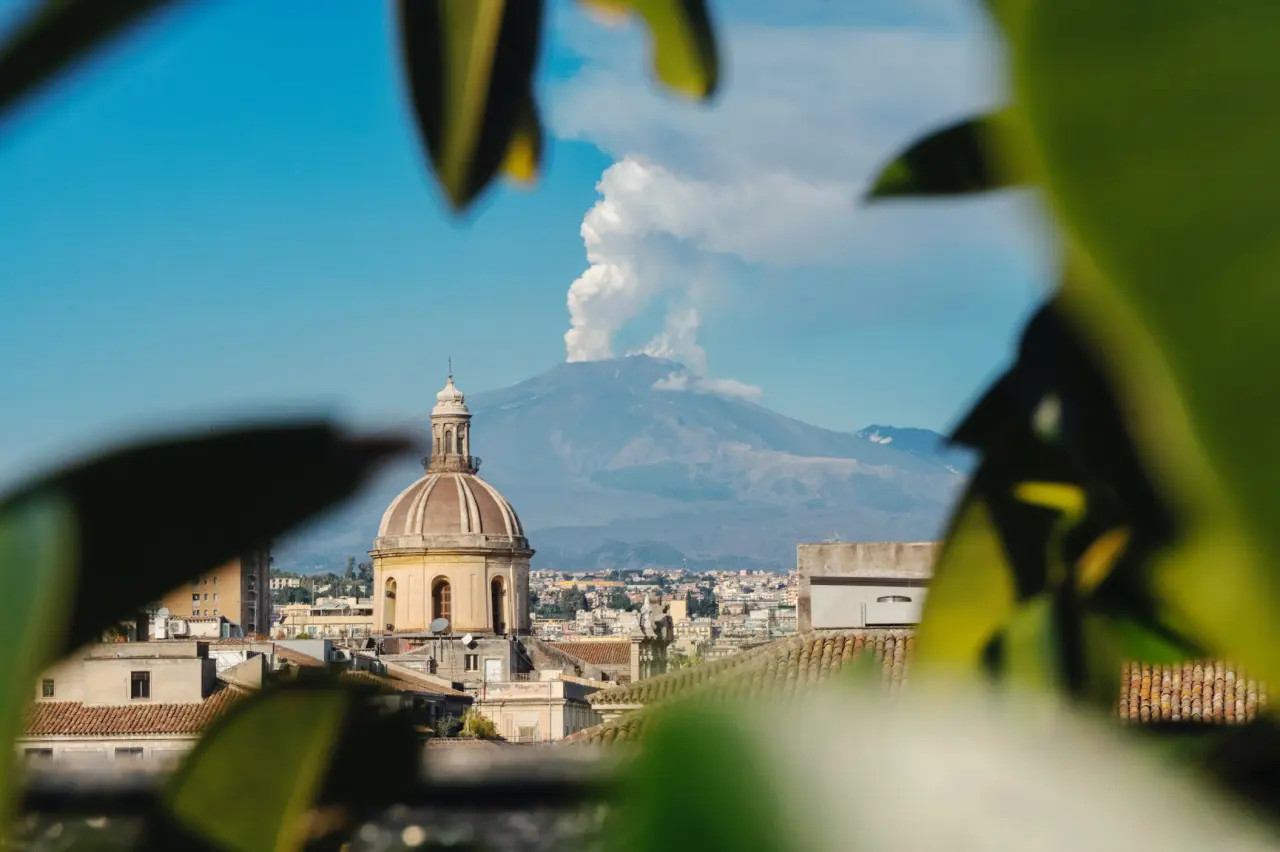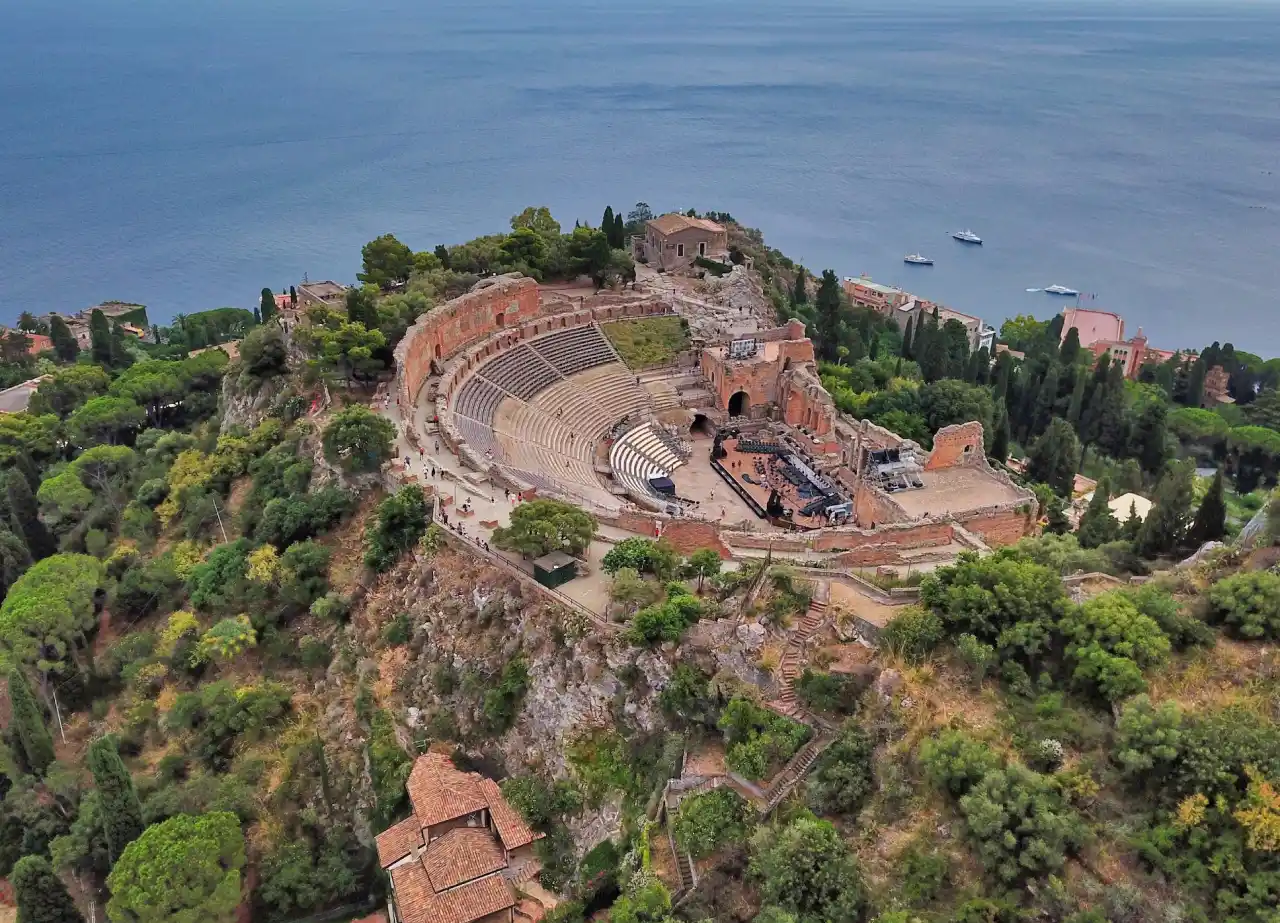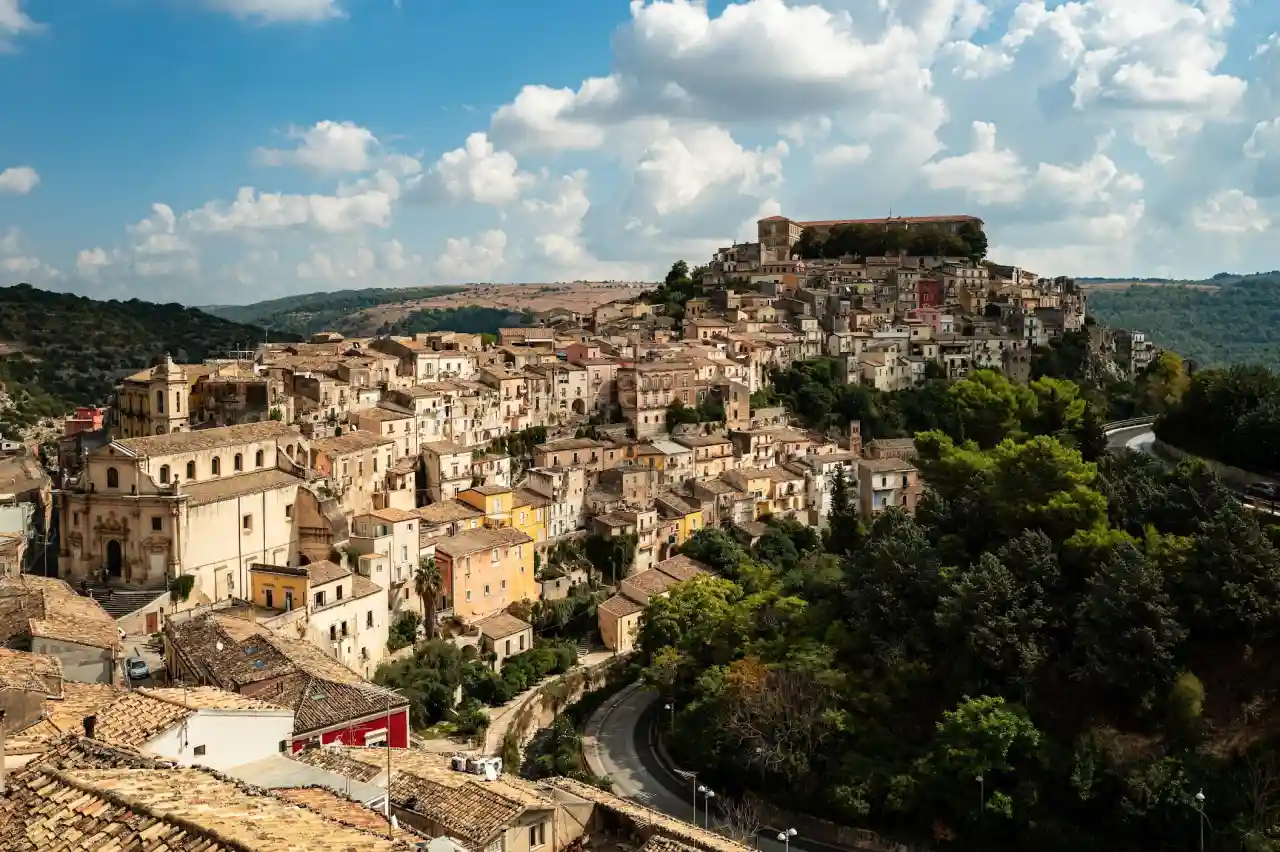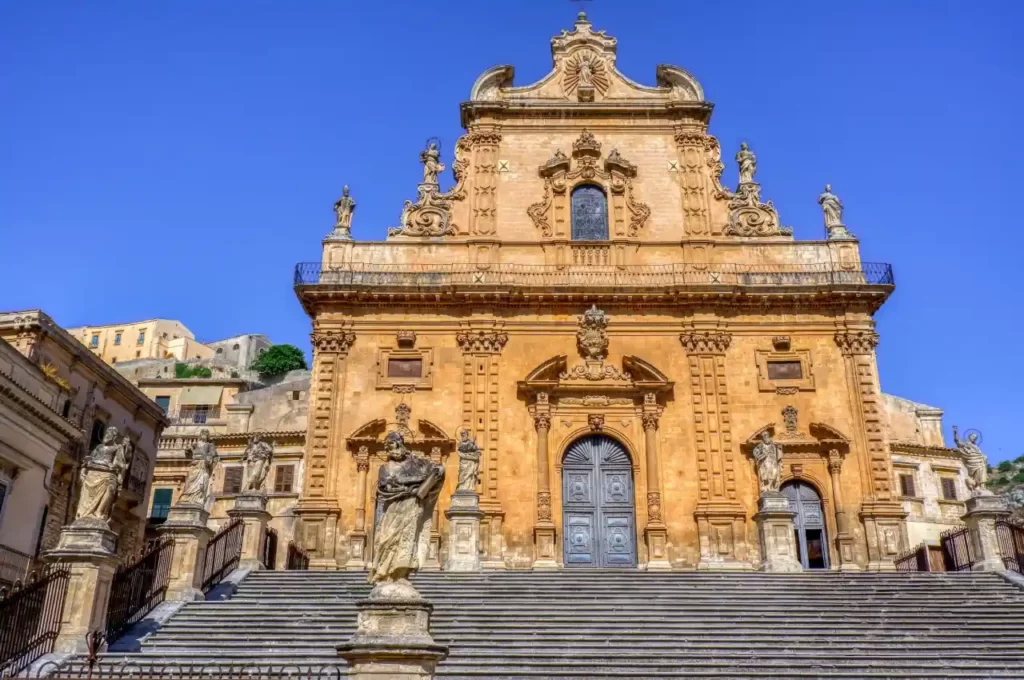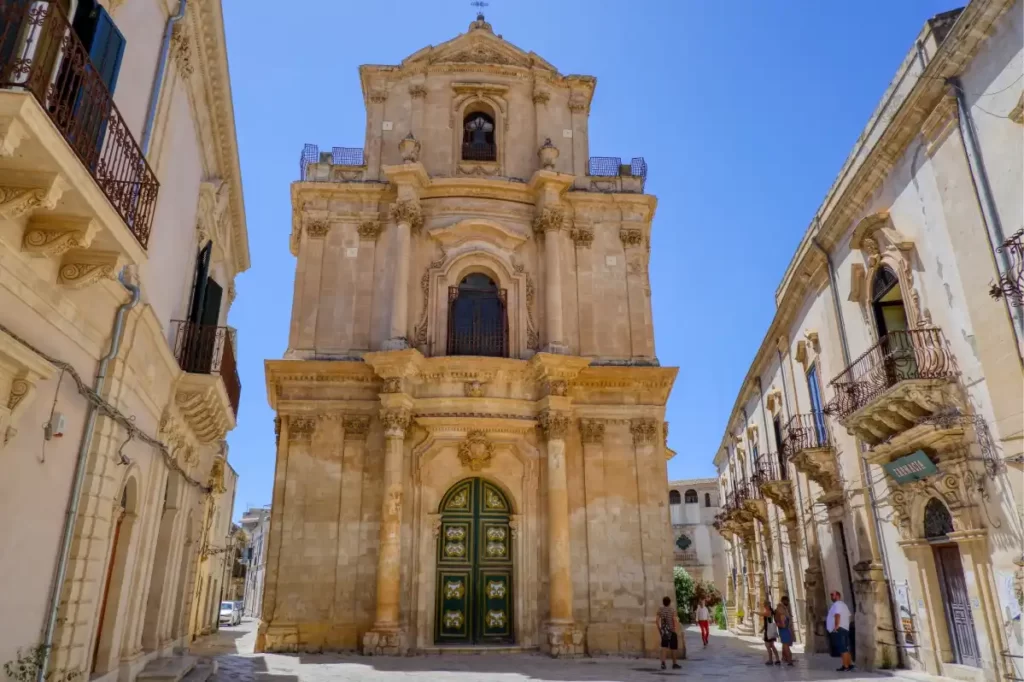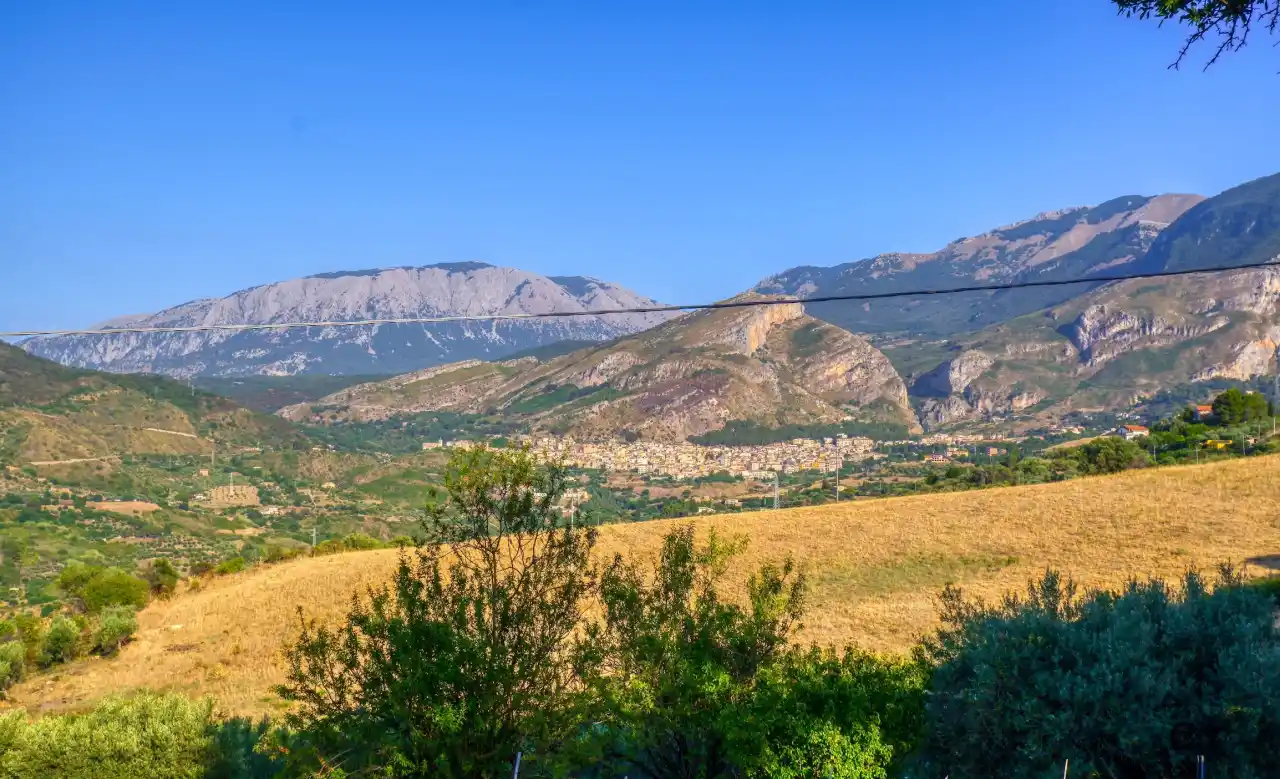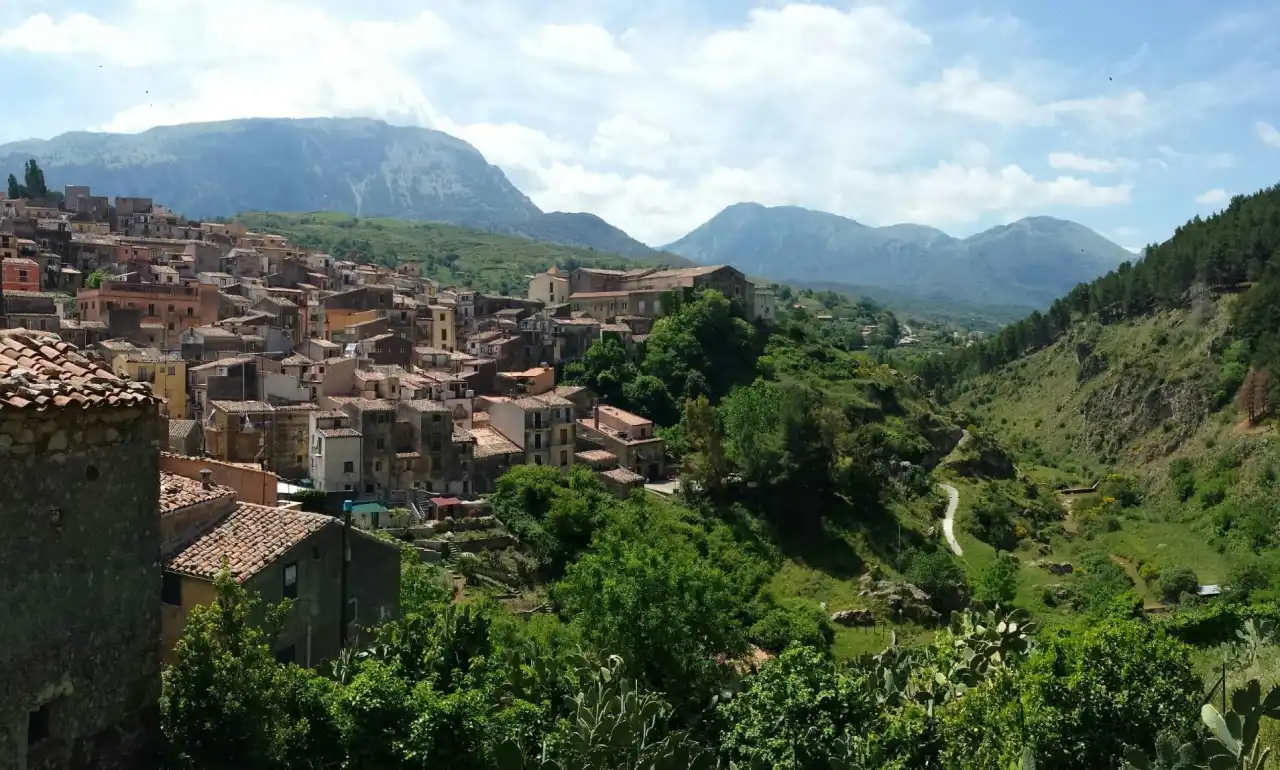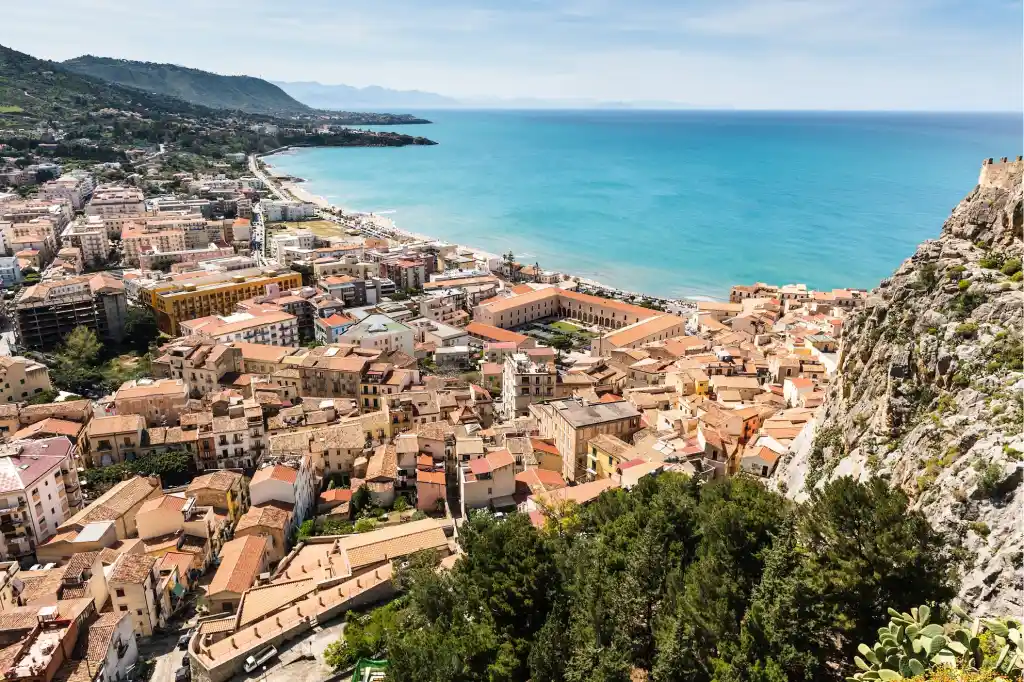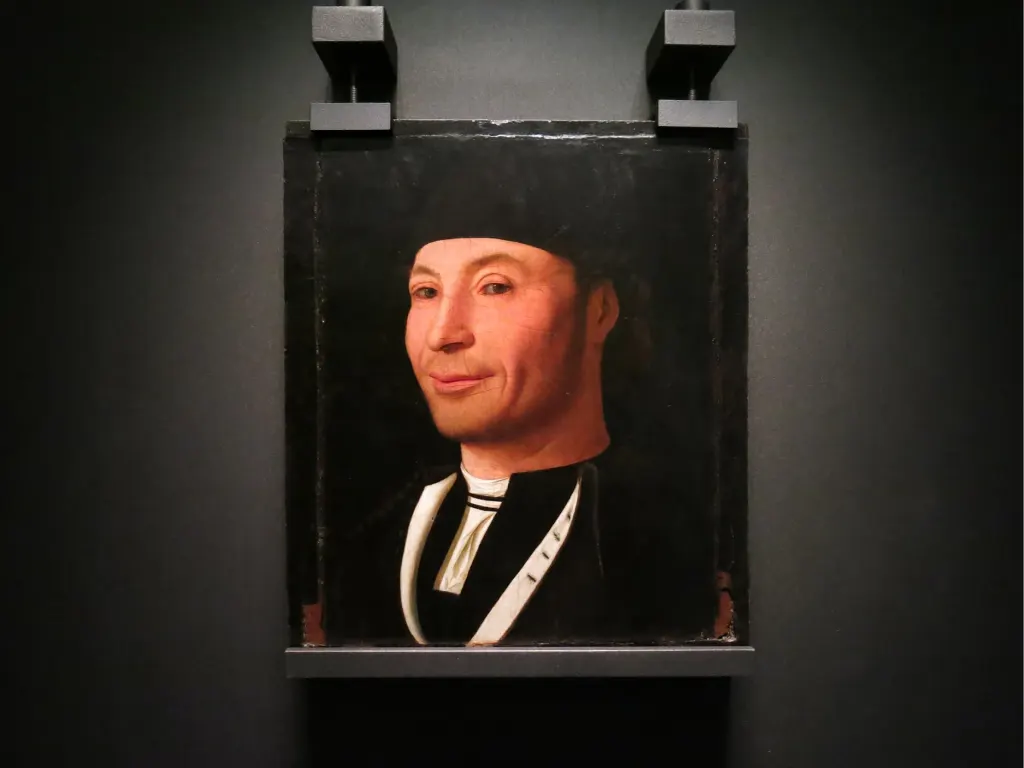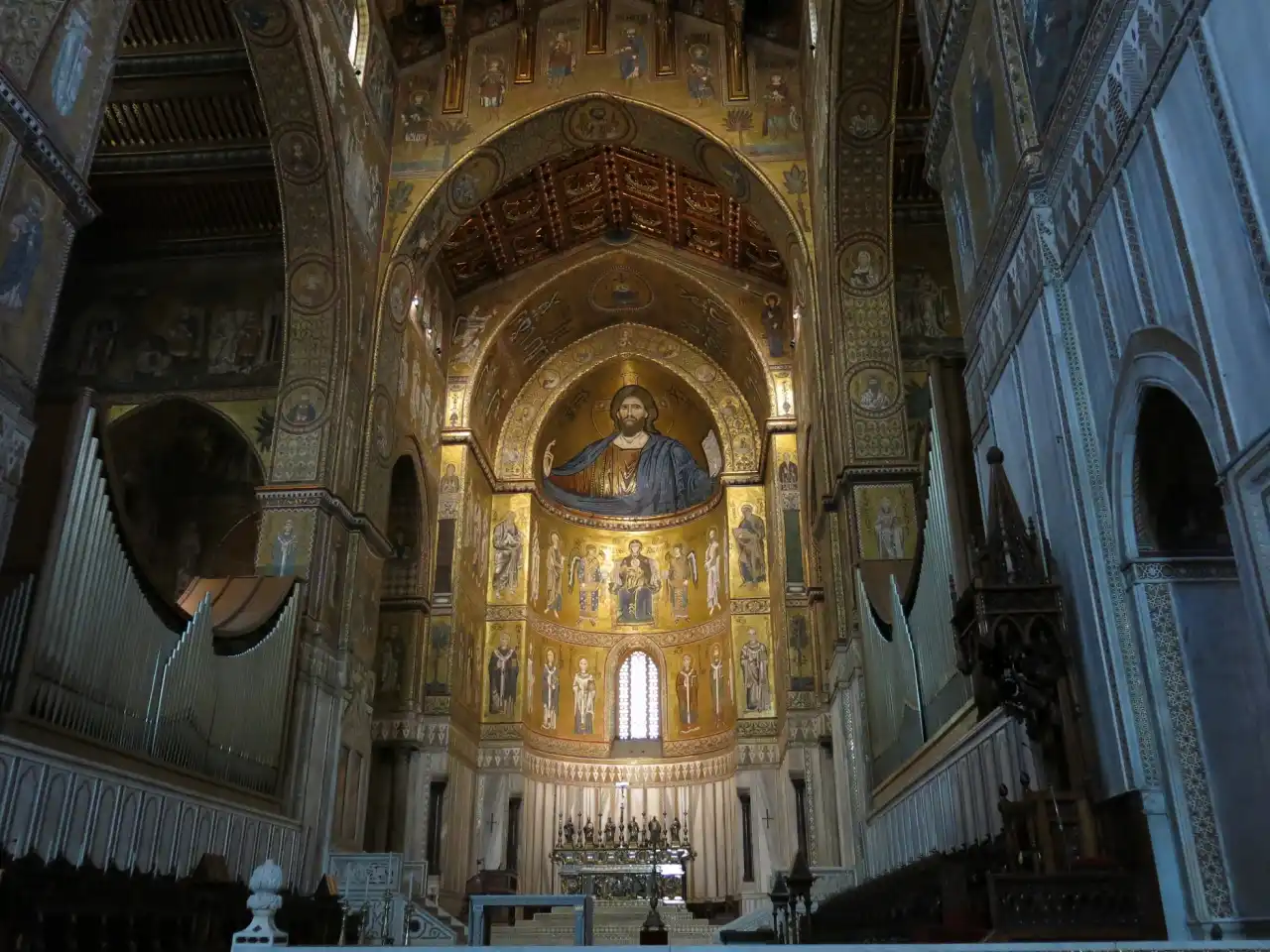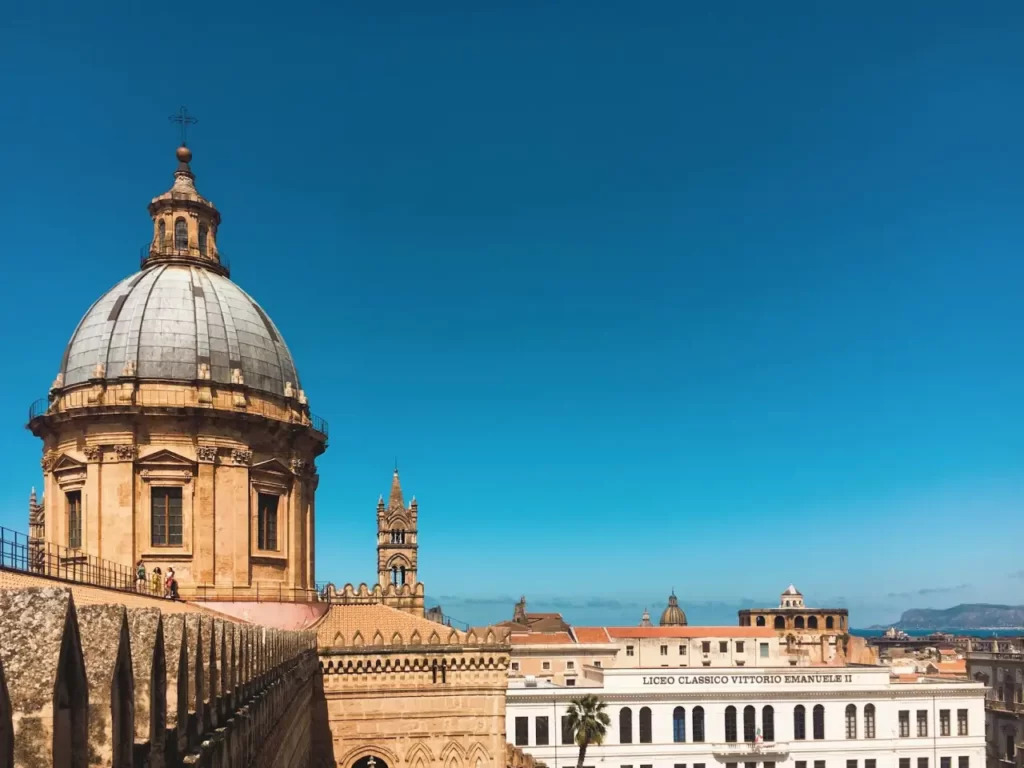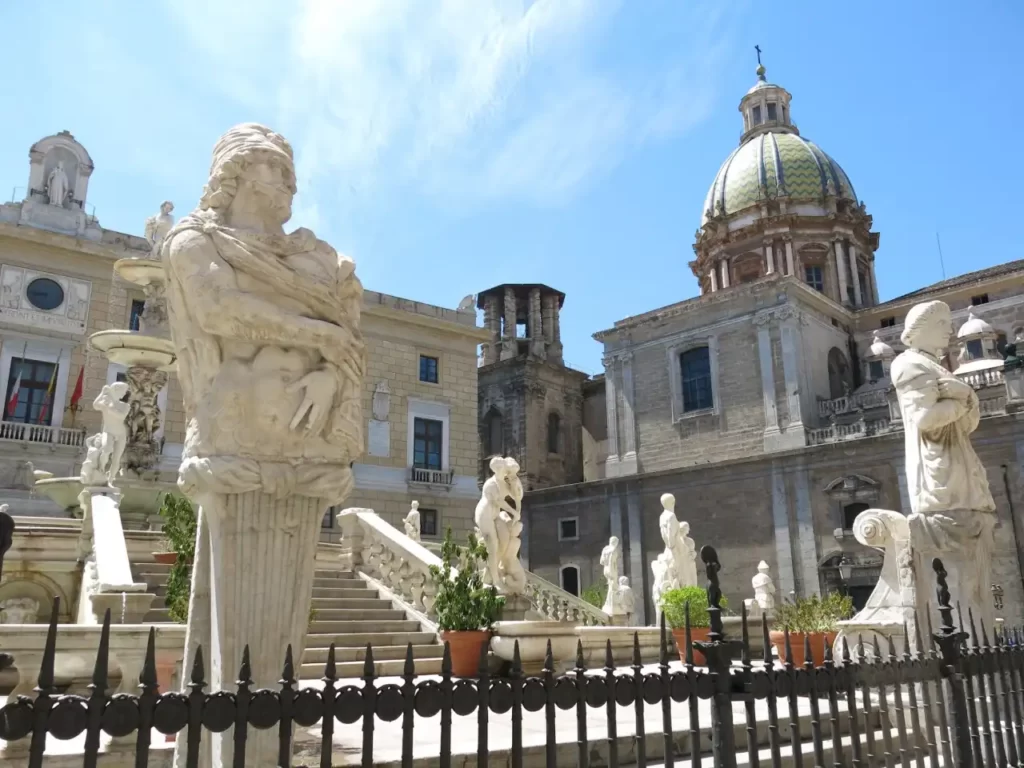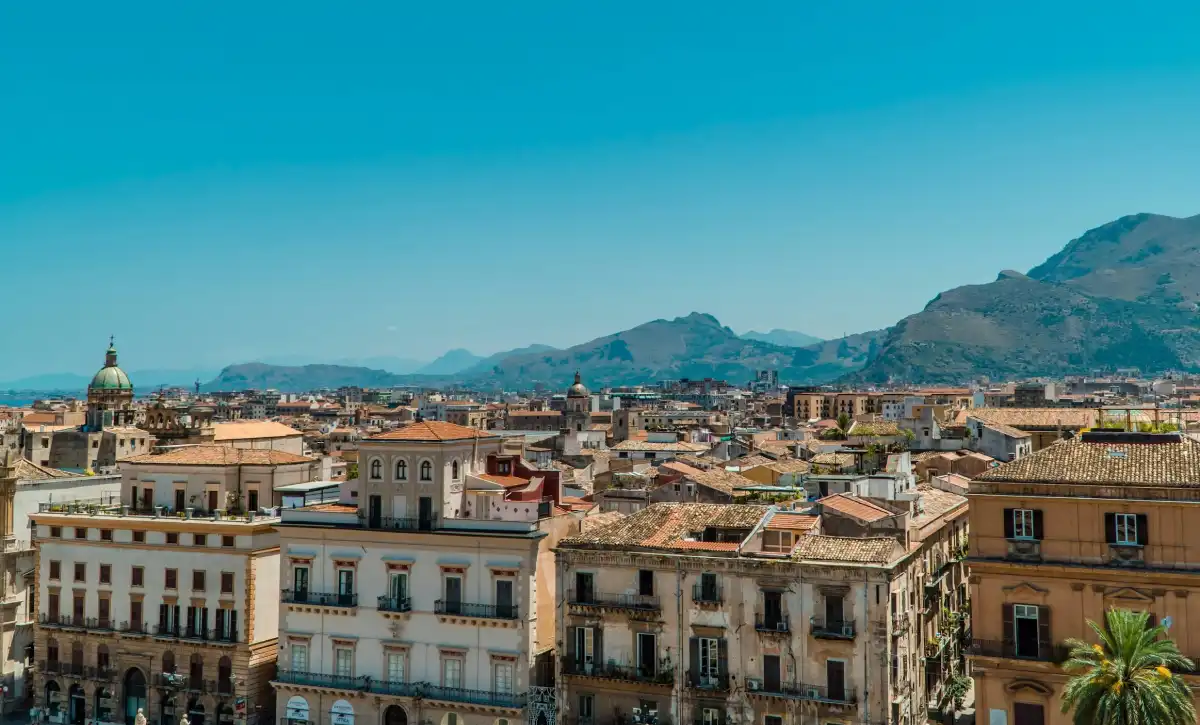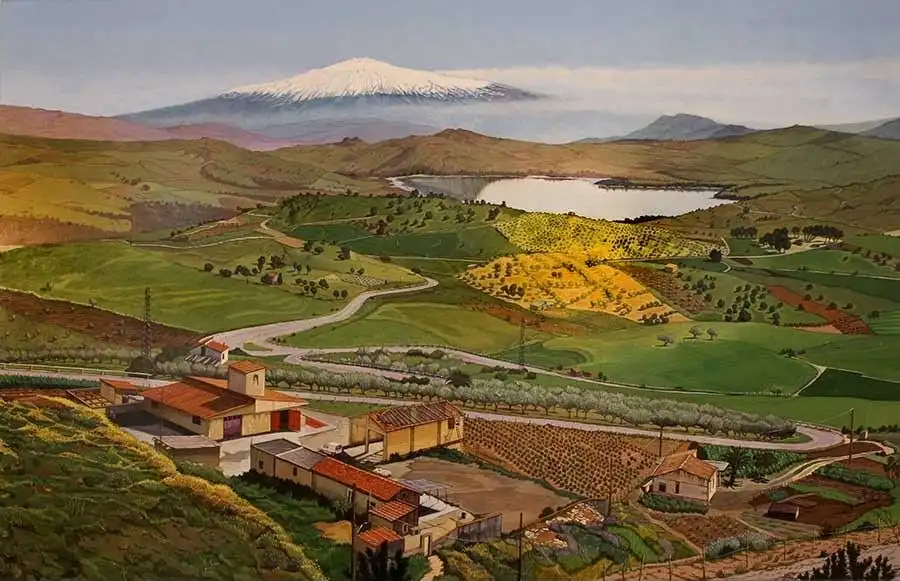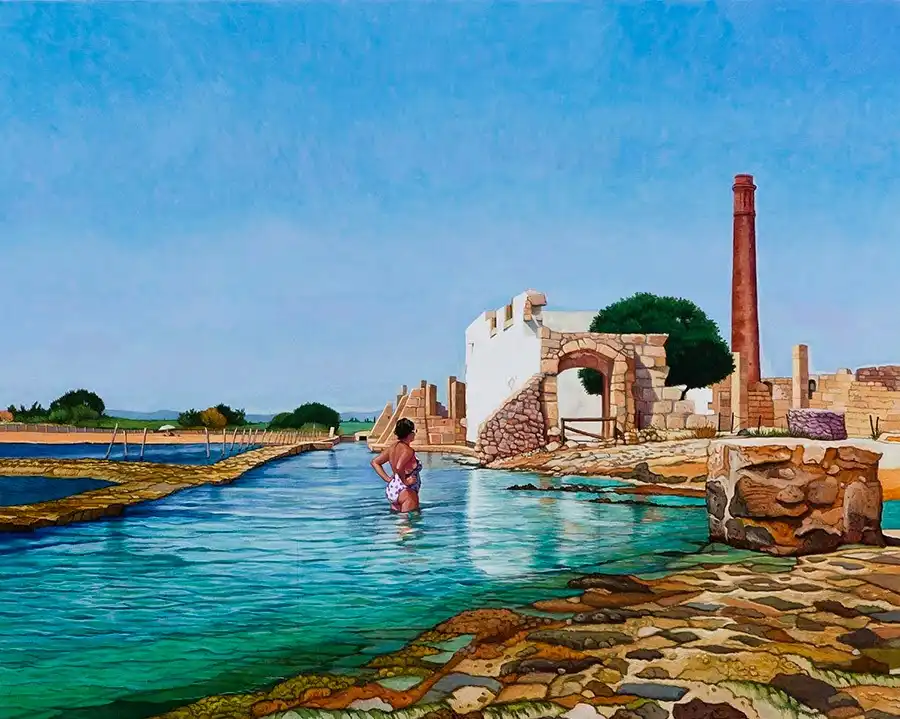Sicily is one of the most unique and heterogeneous places in Europe. The island is home to fantastic landscapes, beautiful seaside and one of the largest still active European volcanos. With its long history, Sicily’s cultural heritage is one of the most versatile on the Old Continent. From the Ancient Greeks and Romans to Normans and Arabs, they all left their mark on the island.
Sicily’s Cultural Heritage
This is a sponsored blog post by Sicily Art Tours, a small company organising unique tours filled with art and culture on Sicily.
Ever since I started reading about Sicily, I was amazed by the variety of its natural landscapes, architectural styles and cultural influences. Its turbulent past created a cultural mix you can hardly find elsewhere in Europe. Sicily has massive mountains but also a turquoise sea. It’s home to some of the best preserved Ancient Greek temples, masterpieces of Renaissance art and unique Baroque architecture.
It’s quite a large island, the biggest one in the Mediterranean Sea, with a population of 4.8 million inhabitants. Sicily is also home to the highest European active volcano, Etna, which is currently 3,357 metres (a bit more than 11,000 feet) high.
⤷ Read more: 25 Beautiful UNESCO World Heritage Sites in Europe
Sicily Art Tours
To share their love towards this extraordinary island, two locals, Serena Firera and Eolo Paul Bottaro, started organising Sicily Art Tours.
“What motivated us to start these art tours is a combination of our personal passion for art, travel and connecting with people who appreciate culture. We also have a strong desire to contribute positively to Sicily. We believe that for too long, Sicily has missed out on tourism due to its troubled history. I remember bringing a Finnish friend, who is a photographer, to Sicily a decade ago, whom I met during my study exchange. He told me he would have never considered visiting a place that, in his mind, was associated with the mafia, but that trip ended up being for him a very enriching cultural experience. Through our art tours, we hope to share the best Sicily has to offer and we hope to make a positive impact on Sicily’s image and its society as a whole”, Serena says.
Eolo continues: “Through the years, I have travelled Sicily deeply and extensively nevertheless, this powerful island still surprises me with its endless amount of art, culture, history and beauty.”
Cultural tourism is all about going local. Learning about local culture, exploring its history, speaking with locals, trying traditional food and experiencing its culture firsthand. Brought up from love and passion towards it, Sicily Art Tours perfectly shares an island’s essence with its visitors.
Serena explains it: “As a Sicilian and a psychologist, I aim to provide our tourists with a deeper insight into Sicilian society as a whole. Sicily is a complex place, brimming with contradictions and captivating stories that have served as inspiration for great authors and artists, both in the past and present. I would love to share with our tourists a psychological prospect on Sicily as well, to help them understand not only the history and art but also the psychology and social dynamics of the region.”
Sicilians build things like they will live forever and eat like they will die tomorrow. – Plato
The 10-day-long Sicily Art Tours will take you to places spanning centuries of its rich history. These small group tours consist of 7 to 16 people, so you can have enough time to explore all of these Sicilian cultural heritage sites, ask questions and wander around picturesque Sicilian towns.
The Sicily Art Tours will take you to five of Sicily’s UNESCO World Heritage Sites. Keep reading to learn about some places you’ll visit during the Sicily Art Tours.
⤷ Read more: Cultural Tourism explained – How to be a cultural tourist
Catania
Catania is the second largest city on Sicily, located between the Etna Mountain and the Ionian Sea. Founded as a Greek colony in the 8th century BC, it’s filled with many sites from the Antiquity. One of the best preserved is the Roman amphitheatre from 300 BC. The city was also one of the cultural centres of Renaissance Italy.
Catania is home to some fantastic examples of Sicilian Baroque architecture, especially because of its usage of the black lava stone from Etna. The Old Town of Catania is listed as a UNESCO World Heritage Site. One of the unmissable sites in Catania is Teatro Massimo Bellini, which opened in 1890. Known for its excellent acoustics, it hosts various musical performances throughout the year.
The city suffered throughout history from the Etna Volcano outbursts. However, they also created fertile soil in the city’s vicinity, which is especially good for vine production.
Messina & Taormina
With its long history, Messina is filled with fascinating architecture. Because of its trading routes, it was one of the first points of entry of the Black Death to Europe in the mid-14th century. The Regional Museum of Messina is the largest one in southern Italy. It exhibits the artworks explaining Messina’s cultural history from the 12th to 18th century. Some of its highlights are Caravaggio’s The Adoration of the Shepherds and Resurrection of Lazarus and artworks by Antonello de Messina, Domenico Gagini and others.
The nearby town of Taormina is home to one of the best-preserved Greek monuments, the Greek Theatre of Taormina. Built in the 3rd century BC, it was mainly constructed of bricks and is still used for various musical and theatrical performances.
⤷ Read more: The most interesting European myths and legends
Syracuse
Syracuse was one of the most important cities during the Ancient Greek time. In the 5th century BC, it was equal in size to Athens. Cicero described it as “the greatest Greek city and the most beautiful of them all”. Ortigia, a small island off the city’s coast, is Syracuse’s historic heart. You’ll find architecture from Ancient Greece and Rome to Norman and Baroque times there.
The Syracuse Cathedral is dedicated to the city’s patron, Saint Lucy. It’s also home to the well-known painting by Caravaggio, The Burial of Saint Lucy. Located in a 12th-century palace, the Bellomo Palace Regional Gallery shouldn’t be missed in Syracuse. The highlight of its collection is Antonello de Messina’s Annunciation.
Modica, Ibla, Ragusa & Scicli
The massive 1693 earthquake demolished the towns in south-east Sicily. They were rebuilt in the following years, erecting many buildings in a new Sicilian Baroque style. Because of their fantastic architecture, all four towns are listed as UNESCO World Heritage Sites.
Sicilian Baroque style is present mainly on more representational buildings. It’s primarily visible in the sacral architecture of churches but also in private palaces built by the local aristocracy. It’s characterised by dramatical, theatrical features, making viewers feel as if they are on a stage of a theatre.
⤷ Serena’s TIP: Although it’s challenging to pick the favourite region of Sicily, I must confess a special affection for the Baroque towns of Modica, Scicli and Ragusa, as well as the enchanting Madonie Mountains. These regions feel like islands within the island, they are less touristy areas exuding tranquillity and unparalleled beauty.
Vila Romana & the Valley of the Temples
Vila Romana del Casale was built in the early 4th century AD. It’s home to one of the world’s richest and best-preserved collections of Roman mosaics, which got it to the list of UNESCO World Heritage Sites.
Another site from the Antiquity that shouldn’t be missed on Sicily is the Valley of the Temples. It consists of seven Doric temples, some of the best Greek architecture and art examples worldwide.
⤷ Serena’s TIP: Walking through the valley on a warm summer night, especially with a full moon casting its glow, is an experience that sends shivers down my spine. It creates a profound connection not only to the ancient history of this land but to the heritage of our entire culture.
Polizzi Generosa
Madonie Mountains are known as the Alps of Sicily, reaching almost 2,000 metres (6562 feet) of height. Polizzi Generosa is a charming village set 917 m above sea level inside the Madonie Natural Park. The village has beautiful art treasures, like the triptych attributed to Rogier van der Weyden at Chiesa Madre.
The town is also interesting because of its long terracotta pottery-making history. However, that skill doesn’t belong to the history books on this island. Sicily Art Tours will take you to the local artist’s Giovanni D’Angelo studio, a third-generation terracotta pottery maker. That contact with locals, artists and craftsmen living and working on Sicily sets up these tours from others.
Serena describes that well: “In addition to exploring art, archaeology, and architecture, our journey will immerse us in Sicilian culture from every angle. We will savour the rich and diverse Sicilian cuisine, influenced by the various dominations that have left their mark on the island. Our meals will be enjoyed at traditional farms, trattorias and fishing villages, where everything is sourced locally. Local expert guides will share the captivating stories behind the places we visit. Furthermore, we’ll have the opportunity to connect with local artists and artisans, allowing us to delve deeper into the beautiful traditions and crafts of Sicily.”
Cefalù & Monreale
Cefalù is a picturesque coastal town in the northern part of Sicily. One of its most fascinating buildings is the Cefalù Cathedral, built in the 12th century. It bears the Norman architectural and Sicilian Romanesque stylistic characteristics. The cathedral is well known for its twin towers and Byzantine mosaics in its interior.
Another cultural spot that should be noticed there is the Mandralisca Museum. It’s a privately owned museum hosting the collection by archaeologist Baron Mandralisca (1809-1864). Its collection’s highlight is Antonello de Messina’s Portrait of an Unknown Man from 1465, considered one of the most distinctive portraits of Renaissance Italian art.
The nearby town of Monreale is home to another beautiful medieval cathedral. The Monreale Cathedral is a fantastic example of Arab-Norman architecture. With its beautiful mosaic interior decoration, it found its place on the UNESCO World Heritage list in 2015.
⤷ Read more: 20 Most iconic churches in Europe
Palermo
More than 2,700 years old, Palermo is the largest town on Sicily and its cultural capital. It was founded by Phoenicians in 734 BC and later ruled by Carthage, Greeks, Romans, Arabs, Normans, Spanish and French. All these rulers left a mark on its architecture, making the city a unique cultural melting point. Home to numerous fantastic cultural sites, some of the most famous are the Palermo Cathedral, the Oratorio di San Lorenzo, the Cappuccini Catacombs with around 1252 mummies, and many more.
One of the best museums in Palermo is Galleria Regionale della Sicilia, located in Palazzo Abatellis and home to Antonello de Messina’s Virgin Annunciate.
⤷ Serena’s TIP: Identifying a habit that unites all Sicilians can be challenging due to the island’s remarkable diversity. However, one common practice, especially during the summer, is enjoying granita and brioche for breakfast. Granita, akin to ice cream, is typically crafted from local ingredients, offering a wonderfully refreshing and delicious start to the day.
Sicily Art Tours leaders
Sicily Art Tours was founded and led by Serena Firera and Eolo Paul Bottaro. They collaborate with local experts and guides in each location visited during the Sicily Art Tours, providing their visitors the best possible and truly local experience.
Born in Sicily, Serena has lived on it most of her life. She holds a degree in psychology. But, after travelling the world and living in Australia for some time, Serena rediscovered her passion towards travel, art and different cultures. After returning to Sicily, she designed the Sicily Art Tours to share her love towards her birthplace with the rest of the world. Serena brings insight into Sicily’s local life, lifestyle and society, helping you understand its culture better.
Eolo is an Australian artist of Italian-Sicilian descent. Although born in Australia, he repeatedly visited Sicily after finally settling on the island. His art is influenced by the Italian Renaissance masters and often inspired by Sicily itself. With his technical art knowledge of the canvas preparations, pigments Renaissance and Baroque Masters used and other tricks of the trade, you’ll get a unique insight into these artworks.
Eolo plays a central role in Sicily Art Tours, leading groups through the island and offering unparalleled insights into the art, culture, and heritage of Sicily. His artistic background, combined with his deep roots in Sicilian culture, enriches the tour experience in ways that are truly unique.
⤷ Would you like to learn more? Visit the Sicily Art Tours website for the tour overview and other details.
Filled with remarkable nature, numerous cultural sites and exciting history, Sicily is worth visiting. Sicily Art Tours creates a fantastic itinerary for you, allowing you to see the best the island offers while meeting its locals, trying the traditional food and immersing into the Sicilian lifestyle.
Have you been to Sicily? What are your favourite places there? Let me know in the comments!
Cover photo by Henrique Ferreira on Unsplash

